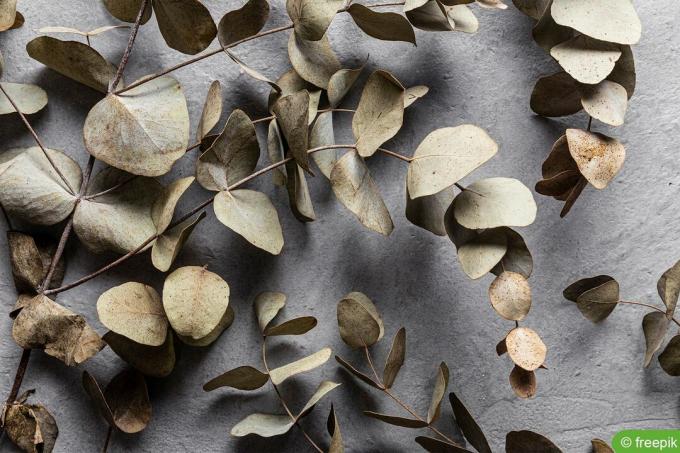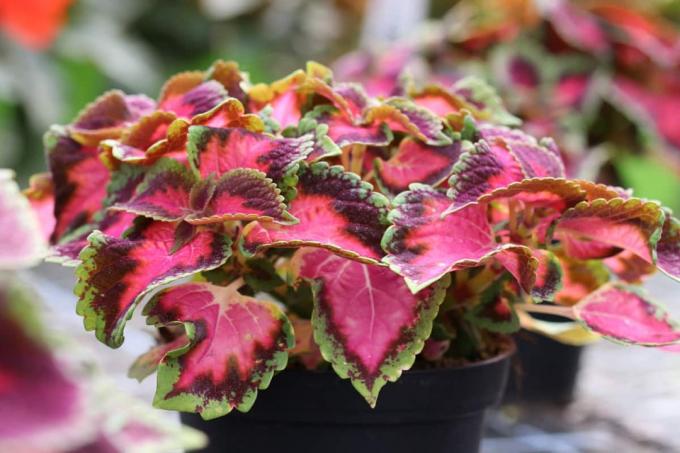

Table of contents
- wintering
- Evergreen Agapanthus varieties
- winter quarters
- Care
- Leaf-wedding Agapanthus varieties
- Care
- Hibernation outdoors
- Beginning of the outdoor season
- Unexpected late frosts
The homeland of the African lily is South Africa. Although sub-zero temperatures can also occur at the southern tip of Africa, the African lily is not hardy in the sense of the German winter. However, some varieties can survive the German winter in mild regions for a few years with a little help. However, since the blooms increase with the age of the plants, you should think twice about planting the African lily and spending the winter outdoors.
wintering
When wintering the African lily, a distinction must be made between evergreen and leaf-feeding varieties. Because the different varieties have different requirements when it comes to overwintering. Although evergreen and leaf-wedding African lilies tolerate different low temperatures, their biggest enemy is the wet German winter. Because the wet and cold weather leads to frostbite in the root ball.
Evergreen Agapanthus varieties
Evergreen African lilies keep their leaves even during the cold season. Since they do not tolerate harder frost, they cannot overwinter planted outdoors in this country. Therefore, they should definitely be cultivated in a bucket. Since evergreen varieties of the African lily are not hardy, they should move to winter quarters before the first frost.
Tip:
Leave evergreen African lilies outdoors for as long as possible.
winter quarters
Evergreen agapanthus must move to a winter quarters in winter. This should be light, dry and cool. It is optimal when the winter quarters have a temperature between 0 and 7 degrees Celsius.
Tip:
The temperature must never fall below 0 degrees Celsius, since evergreen African lilies have to hibernate frost-free. Because stronger frost is deadly for these varieties.
Temperatures shouldn't exceed 7 degrees Celsius either. This does not harm the plant itself, but it will produce fewer flowers the next year.
Care
During the hibernation Agapanthus does not need any care. Watering and fertilizing is stopped. However, you should not leave the African lilies to themselves. Regular checking for pest infestation is not only recommended, but also necessary in order to avoid any nasty surprises. You should also air the room regularly, preferably on frost-free days.
Leaf-wedding Agapanthus varieties
Leaf-weeding African lilies lose their foliage in winter. Therefore, if they are cultivated in a tub, they can also overwinter in the dark. The temperature of the winter quarters should be as low as possible, but frost-free. The plants tolerate light frost for a short time, but only if the root soil is kept extremely dry.
Care
Leaf-feeding African lilies do not need any care in winter. So they are neither watered nor fertilized. The location should also not be too damp, because a dry root ball or a dry substrate are all the better for the plants.
Hibernation outdoors

Since African lilies can even tolerate temperatures down to minus 15 degrees Celsius for a short time when the soil is dry, they can survive the German winter planted outdoors. However, you should provide good cover, such as mulch, and moisture protection. In addition, overwintering outdoors is only possible if the water can drain off very well, i.e. the soil is extremely permeable.
Tip:
Outdoor hibernation is not really recommended. The greatest chances of success exist in mild regions, such as in wine-growing regions.
preparations
Irrespective of whether leaf-weeding African lilies overwinter outdoors or in tubs indoors, you should definitely remove all yellow or remove dying leaves. If these remain on the plant, this can lead to rot or mold growth.
Beginning of the outdoor season
For African lilies, the outdoor season begins as soon as no more severe frosts are expected. Since they survive the cold snap during the Ice Saints, i.e. mid-May, they are already outside again at the beginning of April. This early move outside ensures a stable leaf structure and strong flower stalks. Choose a dry, cloudy day for the move. This allows the plant to get used to the new environment again. In addition, you should not immediately put Agapanthus in its sunny summer location, because the sudden blazing sun damages the plants: they get sunburned, i.e. the leaves burn in the sun. After a few days African lilies will get used to the sun's rays and can move to their summer spot.
Tip:
Since agapanthus should stay outside as long as possible in the fall, it should also be brought back outside as early as possible. You can therefore place the plants outside during the day on frost-free, sunny days as early as February or March. However, since they are not hardy, you should bring the plants back inside for the night.
Unexpected late frosts
If there are unexpected late frosts in April, you should bring the plants back inside for a short time. Alternatively, you can also protect them with a thermal insulation fleece.
 Home editorial office
Home editorial office
Learn more about overwintering plants

Eucalyptus dries up during the winter: what to do?
Eucalyptus in tubs spends the winter best in a frost-protected place in the house. It is not uncommon for the beautiful eucalyptus plants to dry up during the winter. We show what you can do about it.

Is bamboo hardy? Hibernate bamboo correctly
A bamboo can undoubtedly enrich any garden. But can it survive winter temperatures in good health? There is no general answer. It depends on the species and what winter protection it gets.

Is the colored nettle hardy? 6 tips for wintering
Summer is the season when the colors of these ornamental foliage plants are at their most intense. Most of the leaves are multicolored, with different drawings, wavy or heavily slit edges.

Is Camellia japonica hardy? Overwinter camellia properly
Anyone who sees a blooming camellia for the first time will definitely be amazed. The attractive plant, which came to Central Europe from Japan and Korea, has taken the hearts of hobby gardeners by storm. It is usually cultivated in tubs. Is she hardy?

Is the magic flower hardy? | Overwinter Mirabilis jalapa
The Japanese miracle flower (Mirabilis jalapa) delights its viewers with its bright and colorful flowers from June to October. It carries up to five different colored flowers on one and the same plant. Even a single flower can be multicolored.

Is rhododendron hardy? 6 tips for wintering
Overwintering rhododendrons: With these 6 tips you can get the azaleas through the winter safely!



